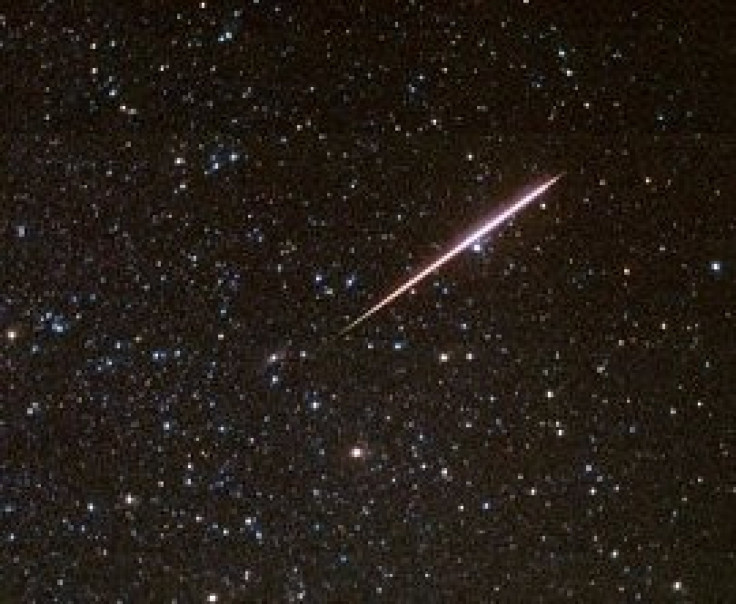Battle in the Sky: Perseid Meteor Shower Vs Full Moon

As the sun sets tonight, get set to gaze at a battle in the sky between the most popular sky shows Perseid meteor shower and the big, full moon to showcase who is the best. The meteor shower, which is caused by debris from Comet Swift-Tuttle and observed for about 2000 years, peaks on the night of Friday-Saturday at 2 a.m. when more than 100 meteors per hour could light up the sky.
The 2011 Perseids is called "hopelessly moonlit" by the International Meteor Organization. The full moonlight will render lackluster to what is usually an impressive show, which is producing fast-moving shooting stars throughout July and August.
There are other meteor showers as well, mainly the Lyrids during April, the Geminids during mid-December and Quadrantids during January, but Perseids is the best meteor shower of the year.
However, viewing the annual Perseid meteor shower this year will be hampered by the full moon, which happens when Earth comes between the Sun and the Moon.
The full moon falls on August 13 and is also called 'Grain Moon' or 'Green Corn Moon'. At the full moon, the moon rises about the same time the sun sets and it sets at about the same time the sun rises.
This will create difficulty in viewing the Perseid meteor shower, which peaks on the night of Friday and into the early morning of Aug. 13. But still sky gazers can be able to see a fair number of meteors after midnight today and tomorrow.
The full moon will wash out all but the brightest meteors, one could probably watch only about 20-35 per hour at the most. The best hours for meteor-watching are between midnight and dawn and it is best if one watches with naked eyes, not using binoculars. Again, it will do good to steer clear of city lights when looking for a pedestal to watch from. Also, look for a patch of sky that's free of clouds.
"The Perseids are always an exciting meteor shower to watch out for. Even in large cities it's often possible to catch site of some of the brighter Perseid meteors streaking across the sky, but from a really dark site you can sometimes see dozens per hour," says Dr Marek Kukula, public astronomer at the Greenwich Royal Observatory in London.
The shower happens every year on August when Earth travels through a stream of debris stretching along the orbit of the comet Swift-Tuttle, which orbits the sun once every 133 years.
The huge comet swings through the inner solar system and leaves behind a trail of dust and gravel. These bits of ice and dust -- most over 1,000 years old -- burn up in the Earth's atmosphere.
The meteors enter Earth's atmosphere at about roughly 133,200 mph, and most of them are the size of sand grains, according to space.com. Some are as big as peas or marbles, and almost none hits the ground.
The Perseids are so-called because the point they appear to come from, called the radiant, lies in the constellation Perseus. The Perseids can be seen all over the sky, but the best viewing opportunities will be across the northern hemisphere.
Apart from those enjoying the sky-watching, Internet users can relish to live shows online. The net-surfers can enjoy the celestial show without watching the sky through a live video feed of the sky provided by NASA's Marshall Space Flight Center.
People seeking to know more about the shower can join NASA astronomer Bill Cooke and his team in a live online chat to ask questions and get expert insight into the event as it unfolds.
Even if you missed out the shower peaking, the Perseids will be active till August 24, where you can glimpse at least 5-10 meteors per hour.
© Copyright IBTimes 2024. All rights reserved.











